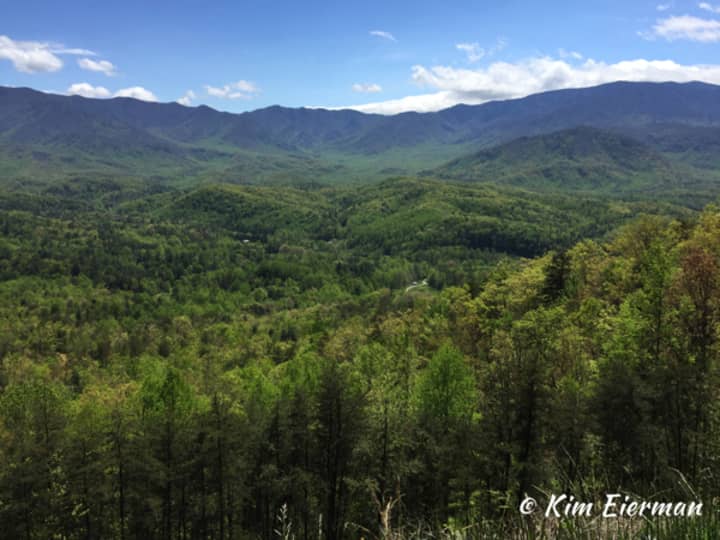Every April, the Smoky Mountain Wildflower Pilgrimage attracts hundreds of visitors to Tennessee. Led by ecologists, botanists, horticulturists, and naturalists, attendees enjoy hikes through old growth forests, 19th century homesteads, young forests once clear-cut, and natural and man-made meadows.
In most of the Northeast, if we let our home landscapes “go” and allowed them to transition through natural succession, we would see our yards revert to forests. Nature is giving us a clue about gardening more ecologically.
Here are some lessons from the Smokies that can be applied to any home landscape:
Nature Isn’t Perfect
The compelling beauty of the Smokies includes elements we rarely allow to occur in our home landscapes, like moss-covered rotting logs that provide habitat to threatened salamanders, while releasing nutrients back into the soil as the woody material decomposes. Dead tree snags, full of life, provide welcome habitat to woodpeckers, cavity-nesting native bees, and raccoons.
Carpets of leaves, still intact after winter, serve as habitat to scores of invertebrates, many destined to become a welcome meal to fledgling birds. As the leaf layer decomposes, it acts an organic trifecta - nature’s mulch, compost, and fertilizer, delivering critical nutrients into the soil.
Nature isn’t perfect, nor is a healthy home landscape. “Neat and tidy” often means “sterile and lifeless.” Loosen up a bit and find the beauty in these natural processes. It’s a lot less work, too.
Native Plants Have Ecological Importance
Within a few brief minutes in the Smokies, you begin to notice activity all around you – small bees and flies foraging on spring wildflowers like Spring Beauties and Dutchman’s Breeches, hummingbirds on their early return, sipping nectar from scarlet-colored Fire Pinks, Frittilary butterfly caterpillars feeding on violet leaves, the adults nectaring on the violet’s flowers. Native plants have evolved with native creatures that depend upon them.
Emphasize native plants in your landscape to support native pollinators, birds, butterflies and other wildlife.
Layers Matter
Particularly noticeable in a forest, natural landscapes have layers – tall canopy trees, understory trees, shrubs, flowering and non-flowering perennial plants and native annuals. Each layer provides habitat to different creatures – while an Eastern Towhee prefers to nest on the ground, raptors like hawks, depend upon large canopy trees.
Plant in layers to maximize biodiversity and ecological health in your landscape.
Nature Needs Our Help
Even the Smoky Mountains are plagued by invasive plants and pests. Forests once filled with native hemlocks look barren as woolly adelgid beetles, so familiar in our Northeastern landscapes, decimate these important evergreen trees.
Just as they threaten our own landscapes, garlic mustard, multiflora rose, Japanese honeysuckle, oriental bittersweet, privet and other invasive plants threaten this magnificent national park.
Be a good caretaker of your landscape. Remove invasive plants and replace them with ecologically supportive native alternatives.
Kim Eierman, a resident of Bronxville, is an environmental horticulturist and Founder of EcoBeneficial. When she is not speaking, writing, or consulting about ecological landscapes, she teaches at the New York Botanical Garden, Brooklyn Botanic Garden, The Native Plant Center and Rutgers Home Gardeners School.
Click here to follow Daily Voice Putnam and receive free news updates.


